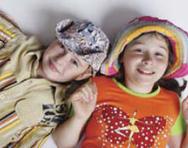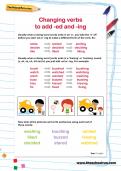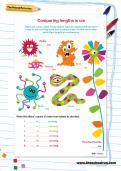Key Stage 1 drama – what they learn

Find out what your wannabe actor will be learning in school and how to help them practise drama at home.
Drama is used a great deal in literacy, to help children to engage with the texts they have read, empathising with characters and developing their own ideas, prior to writing.
Year 1 children are required to be able to re-tell familiar stories, join in with predictable phrases and recite rhymes and poems by heart. In Year 2, they need to become familiar with retelling a wider range of stories and build up a repetoire of poems learnt by heart, reciting some with appropriate intonation to make the meaning clear.


Start the Year 1 Learning Programme!
- Weekly maths & English worksheets direct to your inbox
- Follows the National Curriculum
- Keeps your child's learning on track
Here are some ways that drama is used in KS1:
- While the teacher is reading a story, two children may be asked to stand at the front, dressed as characters from the story. They may be asked to join in by calling out particular lines of dialogue from the story.
- The class may learn a simple poem and then get split up into groups and asked to practise it, accompanied by musical instruments and actions.
- Children may be asked to improvise a scene or conversation from a story, by acting it out in their own words. They may be asked to make up their own scene (for example: a different ending).
- Children may be asked to 'hot-seat.' One child sits on a chair at the front and pretends to be a character from a story read, for example, Cinderella. The others need to ask this child questions ('How did you feel when you lost your slipper?') and they then answer in character.
- Children may be asked to interview each other in character. For example, one is a reporter and the other is the giant from Jack and the Beanstalk. The reporter needs to ask they giant why he is so cruel and how he feels about what has happened in the story.
Lessons examples
Here’s some example of activities teachers might plan:
- Year 1 pupils assume the role of villagers in Jack and the Beanstalk and interview the giant about why he is grumpy. It enables them to see the story and giant from a different viewpoint, and to come up with solutions as to how to make him happier.
- After a year 2 class reading of Walk with a Wolf by Janni Howker, the children write dialogue in role as the wolf searching for food in the cold Canadian mountains. One of their objectives is to use descriptive language well.
Help your child at home
- Read with your child and listen to them read, too.
- Ask your child to imagine they are one of the characters in the story. What do they think or feel about events?
- Read aloud to your child using different voices for different characters, and encourage your child to do the same.
- Take your child to the theatre. Make sure you discuss the play afterwards: which bit did you like best? Who was the best actor? What did you like about the costumes?
- Create a role play box full of props and costumes. Your child will have fun exploring this with their siblings and friends.

Give your child a headstart
- FREE articles & expert information
- FREE resources & activities
- FREE homework help
By proceeding you agree to our terms and conditions. For information on how we use your data, see our privacy policy. You will receive emails from us but can opt out at any time.